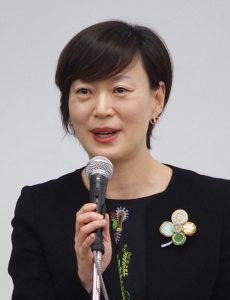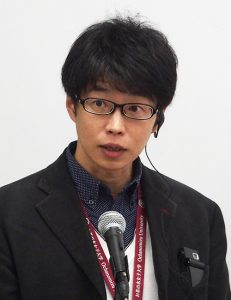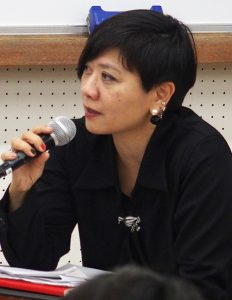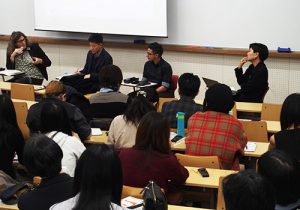IGS International Symposium, “Transgender Questions: Body, Race and Identity”
While sharing goals and concerns in many aspects, feminist and trans rights movements have had tensions and conflicts. The recent surge of aggressive feminist discourse against the inclusion of transgender students in some women’s universities in Japan indicates an urgent need to address these conflicts and envision better relationships between the two movements. Reflecting on growing social interest over the issue of trans inclusion, this public symposium attracted a large number of registers within a few days.
At the symposium, the four panelists disentangled debates about transgender people from transnational and intersectional perspectives, showing how the liberation of trans people is crucial for political projects against oppression based on gender, sexuality, and race.
In her keynote speech, Dr. Susan Striker discussed how “transgender,” as a word and as a concept, has travelled through different spaces and history through four narratives, that is: (1) how gender-variant people started to use the word “transgender” for themselves to resist medicalization; (2) how Anglophone feminists took the notion of “gender” from biomedical research on transsexuals in the 1950s; (3) how the notion of transgender began to circulate transnationally under the US neo-imperialist world order; and (4) how a sort of conspiracy theory that describes transgender people as a threat has emerged. Through this broad examination, Dr. Striker points out that the notion of transgender is no recent innovation by feminism. The concept of “gender” itself took shape from an effort of biomedical research to explain and contain the existence of intersex and transsex people, suggesting why any discussion about transgender and feminism cannot be separated from the issues of historical colonialism, neoliberal management of differences and the rise of ethnocentric nationalism. That is why the liberation of transgender people is such a critical issue not only for the fight against the dualistic gender system but also for any social movements against racism and colonialism.
While pointing out that transphobic feminist discourse on the rise on Japanese social media does have a transnational nature, Dr. Akiko Shimizu argues that such anti-trans discourse has not been simply “imported” to Japan from abroad. She reminded the audience how conservative feminists defensively reacted to “gender backlash” in the early 2000s by discarding sexual and gender minorities and queer politics for the sake of “normal women.” Dr. Shimizu pointed out the danger of the rightest movement picking up trans-exclusionary feminist discourse and urged mainstream feminists to pay closer attention to the effects of such a version of feminist discourse.
Dr. Satoko Itani focuses on the issues around transgender participation in sports, another area that is strictly ruled by a dualistic gender system. Since the International Olympic Committee (IOC) published its policy regarding the inclusion of transgender athletes, transgender people in sports have increasingly become visible, while the backlash against them has also increased. Trans-exclusionary discourse typically argues that the participation of transgender women athletes in women’s sports is unfair and dangerous to “bio-female” athletes. While such anti-trans feminist discourse is promoted by those identifying as advocates for women’s as well as gay rights, Dr. Itani points out that such discourse is rooted in sexism that sees male athletes as naturally superior to female athletes, as well as in colonialism and racism. While such discourse justifies the exclusion of transgender athletes because of their “difference,” discourse for trans inclusion is based on their “sameness” with cisgender women, which fabricates “true” femaleness and effectively erases queer bodies.
As the visibility of transgender people is increasing, Dr. Nael Bhanji poses a question, which trans bodies are becoming visible, and how? Although victims of violence against transgender people heavily concentrate on trans women of color, those who become visible are usually white trans people in a transnational movement to publicly remember victims, effectively obscuring oppressions of race and class in the anti-trans violence. At the same time, images of violent deaths of trans people of color are often hyper-visualized and consumed for imagined intimacy in global spaces. That is, Dr. Bhanji argues, in the post-9/11 era, how violent deaths of racialized trans bodies of color “out there” promote the superiority of “here” while making structural violence surrounding transgender people invisible.
In the discussion session, panelists and audience actively discussed related issues such as discourse on transgender people in Japan, roles played by neoliberalism and nationalism, and in/visualization in media. Especially important issues discussed included: that not only overtly transphobic discourse but a claim that Japan has always been a trans-friendly society also plays a role in justifying the exclusion of transgender people; and that minority rights are increasingly framed as competitions over scarce resources in neoliberal politics.
The symposium reiterated the need to rethink what appears to be a confrontation between trans women and cis women or conflict between feminism and trans rights movement in contexts of power structures where various oppressions intersect. Further progress of research and movements with broader historical and transnational perspectives is very much expected.
Hisako Motoyama (Ochanomizu University, Interdisciplinary Gender Studies)








